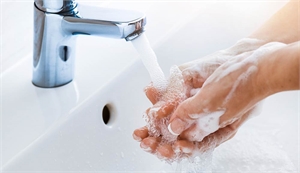
Onychoschizia, horizontal splits within the nail plate edge, is a common problem especially during fall and winter. Nail splitting is often seen together with onychorrhexis, longitudinal, splitting or ridging of the nail plate. Together, these conditions are called “brittle nail syndrome.”
Frequent wetting and drying are the most common causes of nail splitting, making this condition common among health care professionals, hairdressers, and house cleaners. Nail cosmetics (hardeners, polish removers/solvents), nail procedures, occupational exposure to various chemicals and injury (trauma) may play a role in the development of brittle nails. Brittle nails can also be caused by medical problems such as gland (endocrine system) diseases, tuberculosis, Sjögren syndrome, and malnutrition.
Other skin diseases, including lichen planus and psoriasis, as well certain medications made from high dose vitamin A, may cause nail splitting.
Treatment for brittle nail syndrome:
- Reduce how often you wet and dry your nails.
- Never use your nails as tools.
- Wear cotton lined rubber gloves or plastic or rubber gloves over thin cotton gloves while doing all housework, including food preparation.
- Keep the nails trimmed short to reduce worsening of nail splitting. File in a rounded fashion and avoid filing to a point.
- Apply moisturizers, such as Aquaphor Healing Ointment or Cutemol® to cuticles, nails and surrounding skin, immediately after water exposure.
- Nail polishes can protect nails. Use a base coat and a top coat so the manicure will last longer.
- Avoid acrylic, paint on, glue on, or porcelain nails, especially if your nails are thin and fragile.
- Oral supplements of biotin 2.5 mg daily have been shown to be effective.
The physicians at Dermatology Associates Medical Group have expertise in treating conditions of the skin, hair, and nails.


